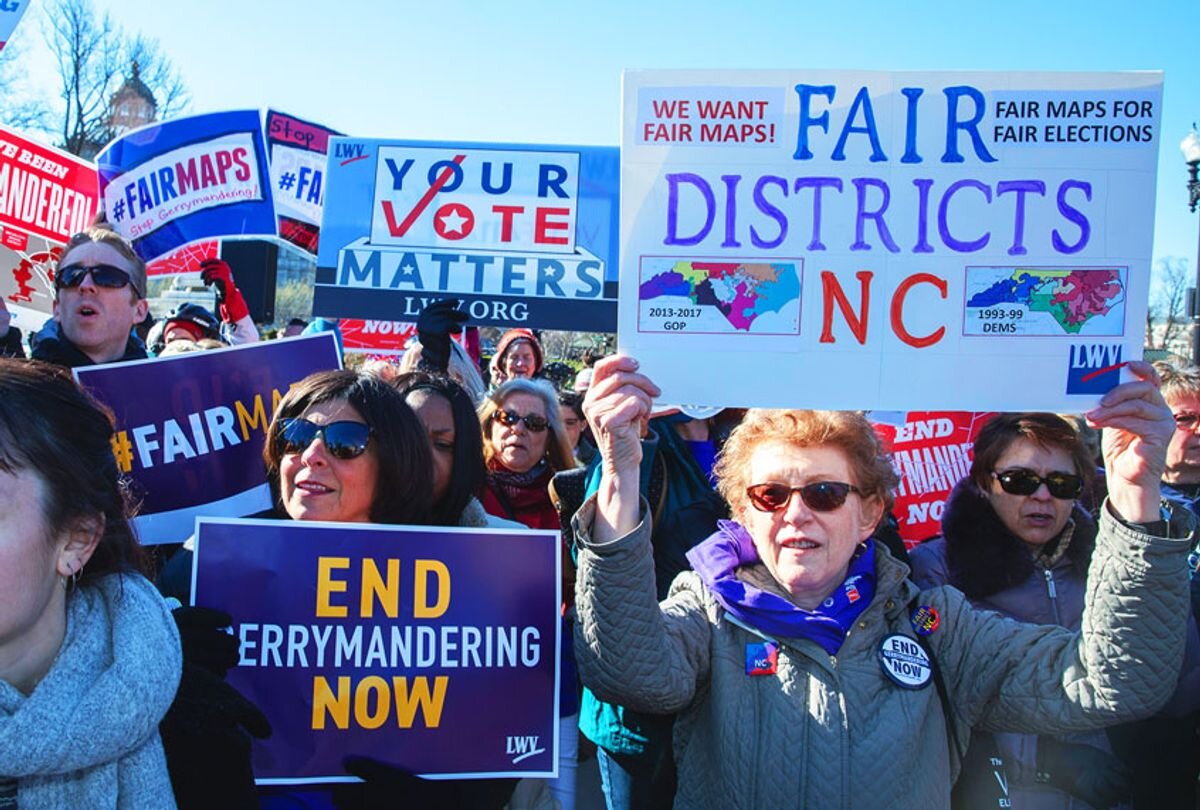Republican Gerrymandering and its Influence on the Future of North Carolina Elections
Protestors from North Carolina attend a “Fair Maps” rally in 2019. Source: Getty Images
Significant Republican victories in North Carolina’s legislature during the 2020 elections have given the party the opportunity to shape the state’s politics for the next ten years. This year, the Republican led General Assembly will be tasked with the process of redrawing the state’s congressional districts to maintain relatively equal district populations, a process known as redistricting. Through this process, political parties are potentially able to gerrymander the districts, shaping them in a way that would give the party a massive electoral advantage at the state and national level — especially if redistricting is not monitored by some nonpartisan influence. Since the new map will shape the state’s politics for the next decade, it will be heavily watched and likely litigated by Democratic opposition.
Regarding the upcoming redistricting process, Republican Representative Destin Hall, Chairman of the House Rules Committee, has given the impression that Republicans will draw fair and representative maps. In a statement at Durham Technical Community College, he said that Republicans will carry out the process in public, keep municipalities and counties whole, and will “voluntarily not use election data, even though the law probably lets us do that.” Indeed, in this redistricting process Republicans must comply with a 2019 state court ruling which required the redistricting process to be transparent to the public. The ruling was a clear attempt to make the process more candid, allowing the public to hold legislators accountable for the maps they draw.
Despite these promises, it is unlikely that the new maps will be completely free of gerrymandering. The Republican General Assembly’s choice to draw the maps themselves, declining to give up the process to a nonpartisan-independent commission, signals that some sort of bias will be influential in the process. Moreover, even though election data will not be used, there are many other indicators of an area’s demographics and politics that officials can use to draw unfair maps. Urban areas are often more Democratic and rural areas more Republican, and this trend helps officials manipulate votes in ways that win them more seats. The process may be more transparent than ever before, and gerrymandering less blatant, but in all likelihood it will still occur.
With its substantial effects on state and national politics, the new maps will likely be subject to further legislative and legal battles for the years to come. With the US Supreme Court ruling in 2020 that federal courts can not decide state districting cases, gerrymandering opponents have turned to legislatures and state courts to create fair maps. Democrats in the US Congress have tried addressing the problem in the 2021 For the People Act, which would have banned partisan gerrymandering, but the legislation was filibustered by Senate Republicans in June and did not pass. More legislation and court battles will certainly be brought up in the future to continue combating the issue, but at the moment the only obstacle to partisan gerrymandering in North Carolina is the 2019 transparency ruling.
This leaves Republicans in the General Assembly with the opportunity to use the redistricting process to draw a map that gives them an electoral advantage. While the process will be more transparent, and the new map may not look obviously gerrymandered like maps of the past, there will likely still be partisan bias that grants Republicans advantages in future elections. Democrats will almost certainly try and push back on the new map, but precedent has shown that without firm legislation at the state and national level, there are few options for the opposition to stop gerrymandering.

